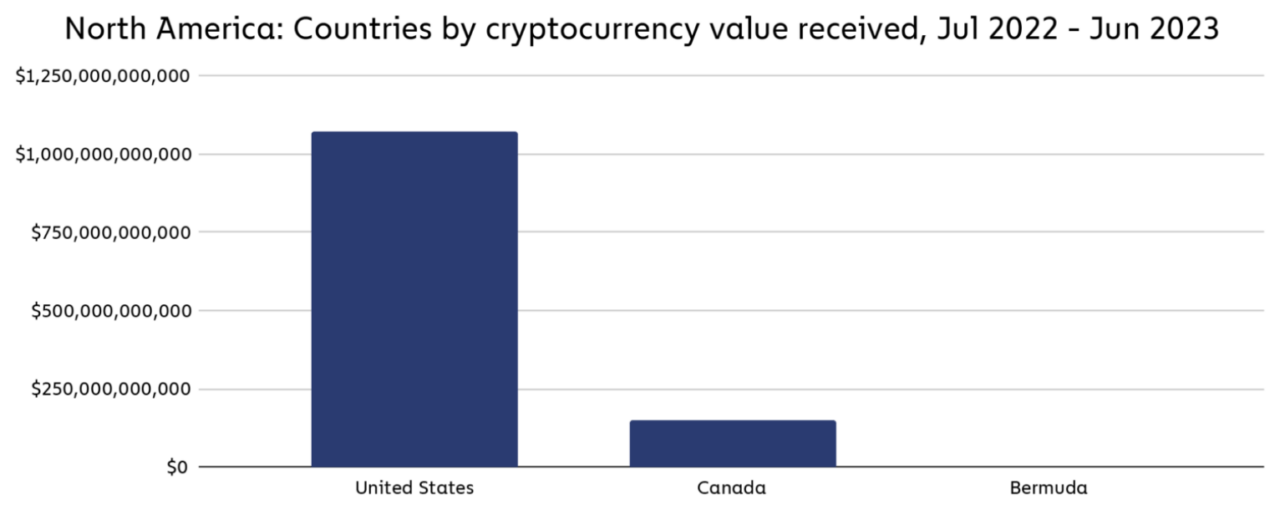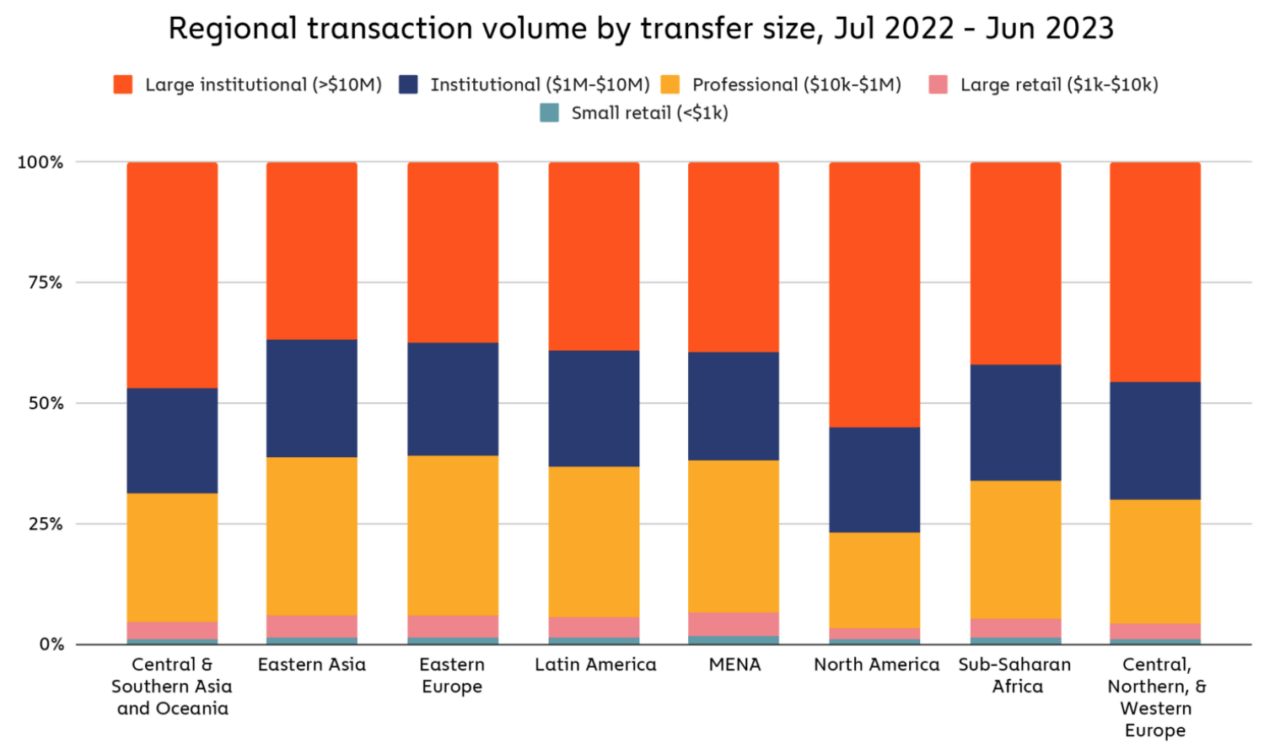Chainalysis Says Institutional Activity Dominating North America's Crypto Market

According to a report published by Chainalysis on October 23, North America stands as the largest cryptocurrency market they have studied, with an estimated transaction volume of $1.2 trillion between July 2022 and June 2023.
This accounts for 24.4% of global cryptocurrency transactions during that period. The United States leads the pack, ranking first globally, while Canada also makes a significant contribution, ranking seventh worldwide.
Chainalysis reveals that North America’s crypto market is predominantly influenced by institutional activity, with 76.9% of transaction volume involving transfers of $1 million or more. It also says the region’s on-chain activity is almost equally divided between decentralized finance (DeFi) and centralized exchanges.
Market Contraction and Stablecoin Decline
The report notes that cryptocurrency activity in North America has decreased over the past year. This decline followed various negative events, including the collapse of FTX in November 2022 and a banking crisis in March that led to the closure of Silicon Valley Bank and other crypto-friendly banks. Despite these setbacks, Chainalysis observes a slight uptick in on-chain activity starting in June 2023.
Per Chainalysis’ blog post, stablecoin usage in North America has also declined, dropping from 70.3% to 48.8% of North America’s on-chain transaction volume between February and June 2023. Chainalysis suggests that investor concerns following the March banking crisis may have contributed to this trend.
Regulatory Oversight and Stablecoins
Chainalysis points out that despite the decline in stablecoin usage, they remain the most widely used type of crypto asset in North America. More than 90% of stablecoin activity is in coins pegged to the U.S. dollar. However, Chainalysis warns that the U.S. may be losing its grip on regulatory oversight of the stablecoin market. Data indicates that a growing share of stablecoin activity is happening through entities not licensed in the United States.
Legislation and Policy Challenges
According to Chainalysis, there are currently two main proposed bills concerning stablecoins:
- The Clarity for Payment Stablecoins Act, introduced in July 2023, aims to establish a clear regulatory framework for payment stablecoins.
- The Responsible Financial Innovation Act, introduced and reintroduced in June 2022 and July 2023 respectively, seeks to subject stablecoin issuers to new financial regulations.
Jason Somensatto, Head of North America Public Policy at Chainalysis, emphasizes the need for timely resolution of regulatory debates to maintain global competitiveness and ensure necessary regulation.
DeFi Usage and Regulatory Uncertainty
Chainalysis also highlights that while North America has historically been a strong adopter of DeFi, its share in crypto activity has fallen significantly over the past year. The report suggests that market turmoil and regulatory uncertainty in the U.S. could be contributing factors.
The Role of Regulation in Future Growth
Chainalysis concludes that as North America rebounds from a decline in crypto activity, regulation will be crucial for its recovery and that the U.S. Congress is actively working on crypto legislation, with regulators committed to fostering a safe yet innovative ecosystem.
Featured Image via Pixabay
Source: Read Full Article


